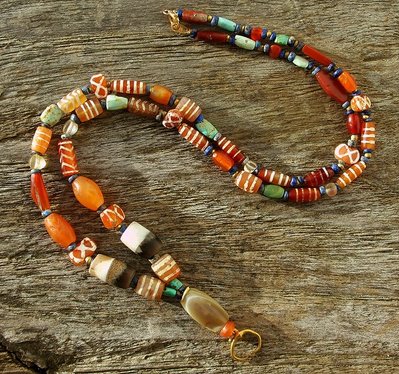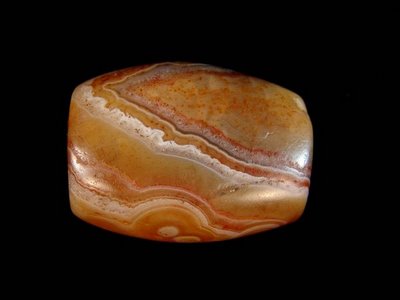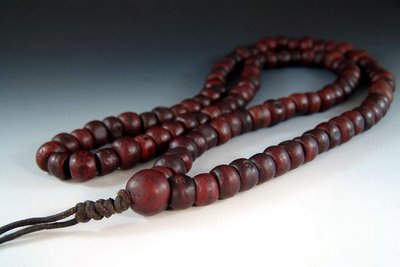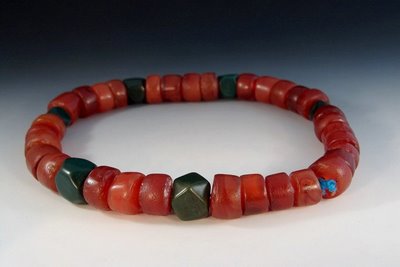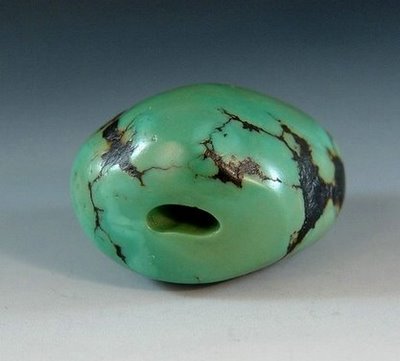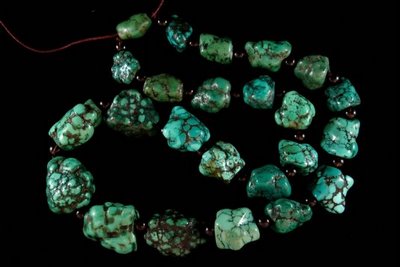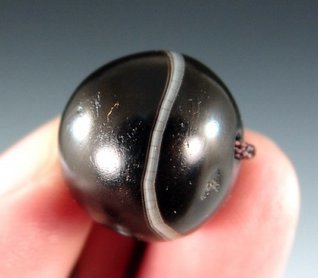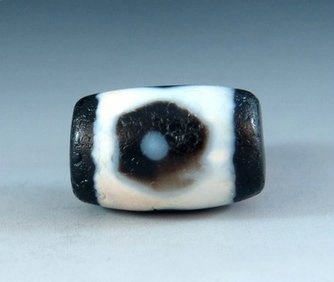Above is a typical selection of 'new' dZi beads that are sold as ancient beads on ebay. All are easily recognisable as being newly created beads for the following reasons:
- They originate from ebay sellers in countries where new beads are produced in vast quantities. Whilst there is nothing wrong in selling new beads it confuses the market when they are misrepresented as ancient.
- Price is always something to look for. All of the above beads are only a few dollars (genuine beads can command many thousands of dollars).
- The artificial weathering marks and surface crazing is not consistent with ancient dZi beads. New beads are simply made this way to give the appearance of age.
- The colour and highly polished glass-like surface sheen that we see on some beads is not typical of ancient dZi.
- A perfect uniform shape and rounded ends can also indicate a modern machine made bead.
- Many new Taiwanese dZi will display many eyes and stylised motifs that are never seen on ancient beads. Ancient dZi will probably have no more than 13 eyes, but it is likely 12 eyes is the highest number you are likely to see.
- There is also no indication that these beads have been strung over a prolonged period. If they were strung in the typical Tibetan fashion with other beads, then there would typically be some sign of this. The body and ends of the bead would usually be worn smooth from centuries of close contact to the body. New beads will fail to show this.
- Often new beads will still have stone powder in the perforations from recent drilling.
- Many ancient dZi display tiny blood spots that are believed to be iron oxide inclusions. New beads often show red or brown 'veins', which are only attempting to replicate the blood spots (see below).
Photo: New Chinese three eyed dZi bead.
Drilling techniques and the quality of agate being used may also help identify the age and place of manufacture of the bead.


































